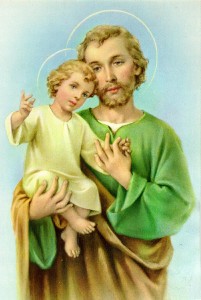Saints' Biographies

Saint James the Greater was one of the 12 Apostles of Jesus, son of Zebedee and Salome and brother of John the Apostle. He is called Saint James the Greater to distinguish him from James, son of Alphaeus, who is known as James the Less. James was one of the first disciples to join Jesus. The Synoptic Gospels state that James and John were with their father by the seashore when Jesus called them to follow him. According to the Gospel of Mark, James and John were called Boanerges, or the ‘Sons of Thunder’. James was one of only three Apostles whom Jesus selected to bear witness to his Transfiguration. Acts of the Apostles records that Agrippa the First had James executed by sword, making him the first of the Apostles to be martyred. The main shrine for Saint James is in Santiago de Compostela in Galicia, Spain. James is the Patron Saint of Spain. The town which contains his shrine is considered the third most holy town in Christendom. The traditional pilgrimage to the shrine of the Saint, known as the ‘Way of Saint James’, has been the most popular pilgrimage for Western European Catholics from the early Middle Ages onwards. The Feast Day of Saint James the Greater is celebrated on 25th July. When Saint James’s Feast Day falls on a Sunday, it is known as ‘jubilee year’, and a special east door is opened for entrance into the Santiago Cathedral.
A question often asked about Saint James is ‘when was he canonized’? The answer is that he has never been formally canonized. In the Early Church, it was assumed from the start that all the Apostles of Jesus (with the exception of Judas Iscariot) were Saints, and this was never disputed. It was also believed that all of the Apostles (except Saint John) suffered martyrdom, itself a sign of Sainthood. Other Saints in the early centuries were recognised as such by the acclamation of the Faithful.

Saint Ambrose was born sometime between 337 and 340 AD in Trier, Germany. He died on 4th April 397 in Milan, Italy. His body lies at the Basilica of Saint Ambrogio in Milan. Ambrose was Bishop of Milan and became one of the most influential ecclesiastical figures of the fourth century. He is counted as one of the four original doctors of the Church. His Feast Day is celebrated on 7th December and he is the Patron Saint of bee keepers, bees, candle makers, domestic animals, French Commissariat, learning, Milan, students, and wax refiners. There is a legend that, as an infant, a swarm of bees settled on Ambrose’s face while he lay in his cradle and left behind a drop of honey.

Saint Maria Goretti was born on 16th October 1890 and is an Italian Virgin Martyr. She is one of the youngest people to be canonized. She died on 6th July 1902 after being stabbed multiple times by her attempted rapist when she refused him because of her love of Jesus and her loyalty to the Ten Commandments. Her shrine is at Nettuno, Province of Rome, Lazio, in Italy. She is the Patron Saint of crime victims, teenage girls, modern youth, and Children of Mary. Maria was canonized on 24th June 1950.
Saint Anthony of Padua was born in Lisbon in 1195 and died on 13th June 1231 in Padua. His shrine is the Basilica of Saint Anthony of Padua in Italy. Saint Anthony is one of the most beloved of Saints, his images and statues are ubiquitous. He is especially invoked for the recovery of lost things. When he died, it is said that the children cried in the streets and that all the bells of the churches rang of their own accord, rung by Angels who came to earth to honour the death of the Saint.

Saint Joseph was the husband of Mary. Although he was not the biological father of Jesus, he acted as his foster-father and as head of the Holy Family. Joseph is venerated as a Saint within the Roman Catholic, Eastern Orthodox , Lutheran and Anglican Churches. His primary Feast Day is 19th March. In addition to his primary Feast Day, Saint Joseph is honoured by the Feast of Saint Joseph the Worker on 1st May. This Feast Day was introduced by Pope Pius XII in 1955 to counteract May Day. Saint Joseph is the Patron Saint of The Universal Church, workers, against doubt and hesitation, and of a happy death.

Saint Mary (Our Lady, Blessed Virgin Mary) was a Jewish woman of Nazareth in Galilee, indentified in the New Testament as the mother of Jesus of Nazareth. She is venerated in the Roman Catholic Church, Eastern Orthodox Church, Oriental Orthodox Churches, Anglican Church, Islam, and certain Protestant denominations. Saint Mary is commemorated on as many as 25 different days. The most universally observed are The Annunciation (25th March), The Assumption (15th August), Her Birthday (8th September), Her Conception (8th December), and Her oldest Feast (on the octave day of Christmas) Mary Mother of God on 1st January, this Feast was established after the Council of Ephesus (in 431 AD) which declared her to be the Theotokos, the God-Bearer.






